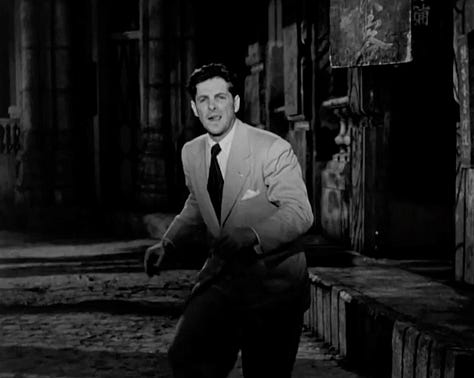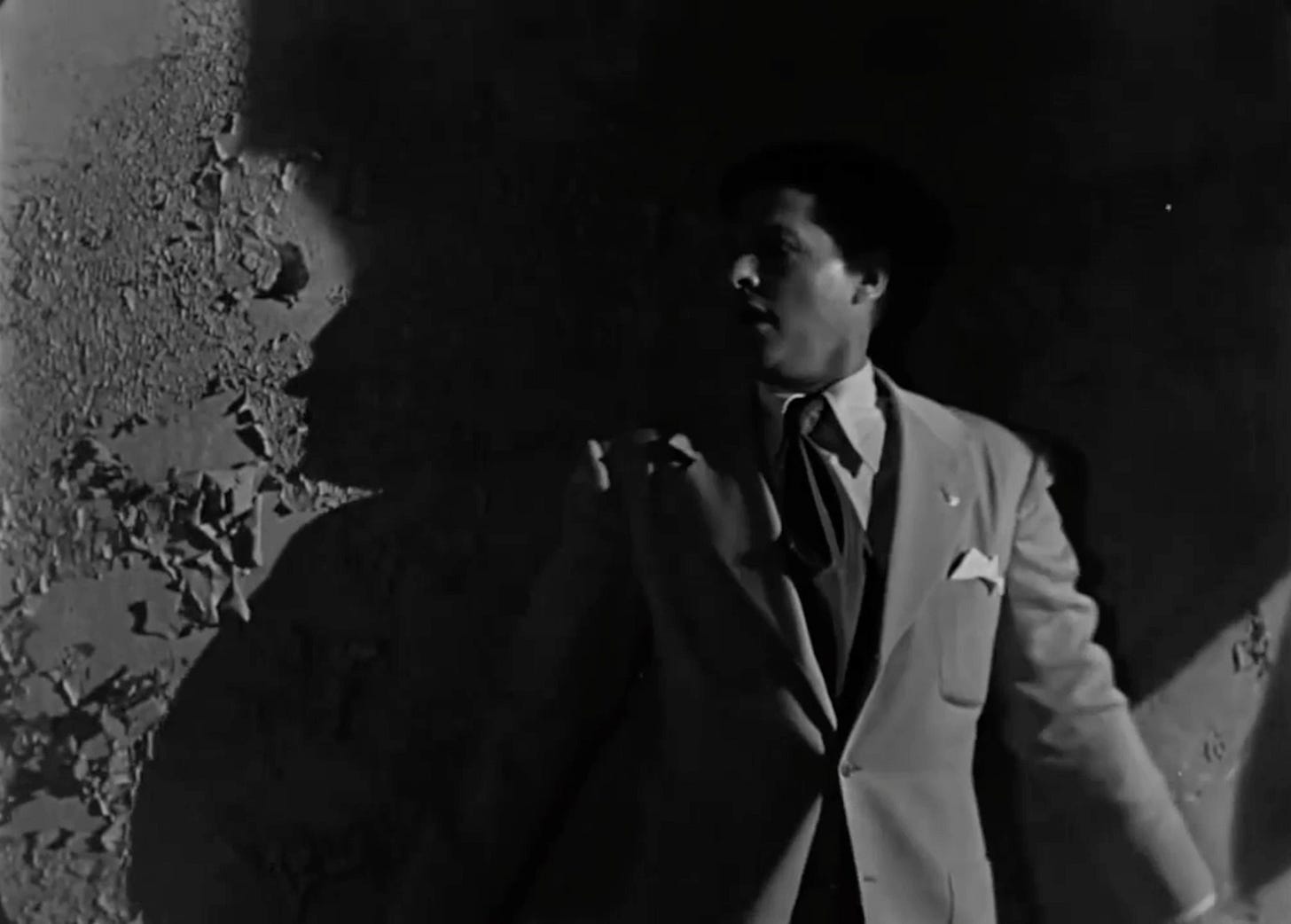Art of the Chase: THE CHASE
These tense scenes from The Chase (1946) shows Scotty (Robert Cummings) framed for the murder, and trapped by dirty cops seeking mob justice.
The pacing goes from calm to frenetic and back again, with specific techniques in each section to keep us tense with anticipation or make us lean forward with urgency.
Set It Up
We’ve talked before about using eye movement to motivate cuts. Here the scene cuts from a shot of Scotty’s eyes moving to a POV of the electrical outlet and cords, letting us see Scotty’s thought process which leads to his actions even as the dialogue from the surrounding corrupt cops drones on.
We’ve already had an eyes-to-POV-of-cords much earlier in the scene; this being the second time means we’re familiar with the elements so when the shots are repeated, we recognise what’s happening before Scotty’s feet step in.


The long, droning talk as Scotty realises how bad his situation is, and sets himself up for one desperate gamble, also sets us up by ratcheting up the tension.
Kick It Off
Literally with a bang!
You can see if you step frame-by-frame that the scene goes from a closeup of Scotty kicking the cord, back to the medium which immediately ‘negatives’ the shot and blows it out in white, then to a wide where the white blow out shrinks down as though the electrical flash has subsided, right before all the lights cut and we’re left in dark shadows and confusion.
The production had lost a lot of money between contract disputes and two big shooting delays, so whether that or other causes prevented them from doing a practical pyrotechnics blowout (in the early 40s, we’re going to guess it wasn’t safety reasons . . .) these kinds of techniques are repeatable on a budget today!
RUN!
As the music swells, Scotty runs, and we’re alone with him for the first several seconds: ducking in and out of shadows; being suddenly blinded by car lights then cutting to his POV of lights and a silhouette before cutting to a 180 showing him squinting into the lights; cutting to various angles of him running L-R and R-L and up and down to convey how he’s disoriented and running on instinct and adrenaline.







Another nice touch is how many ‘jail bar’ shadows are cast by wrought iron railings!
Counterpoint
The tension of the showdown with its several quick cuts led into chaos of the chase with moving camera and many angles, which in turn is juxtaposed with a long, slow take, quiet except for sobs.
We’ve never seen this crying woman, we don’t know who she is or what made her sad, and our main concern from the heart-pounding lead in is WHERE IS SCOTTY!
But the scene between the thug and the sobbing woman does more than just prolong our curiosity and again ratchet our tension as we wonder where Scotty may have got to.
The silent exchange shows us the personality and temperament of the thug — uncaring, thieving, feels invincible — raising the stakes even higher before a final reveal behind the door.



